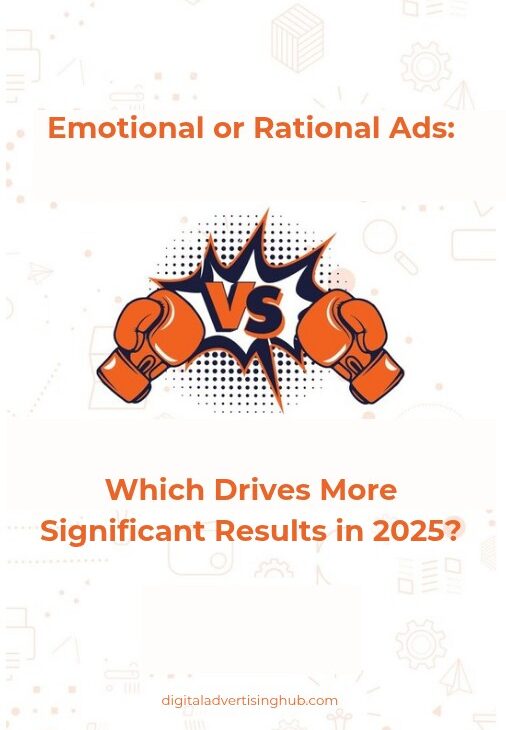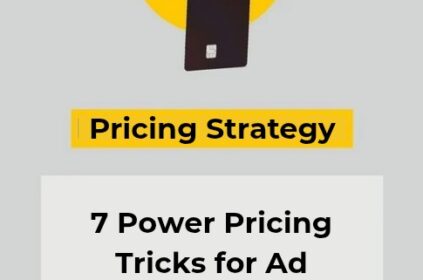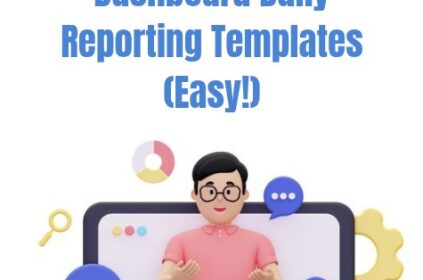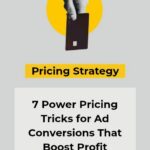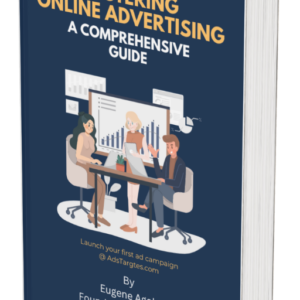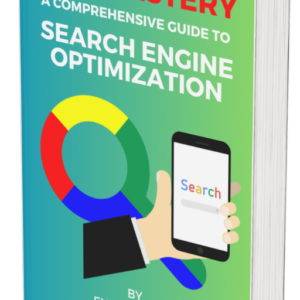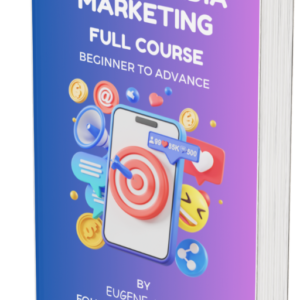In 2025, marketers face a tougher landscape than ever. Consumer attention is splintered across channels, privacy controls are stronger, and buyers expect more relevance and value.
In that environment, choosing whether to lean on emotional or rational ads is no longer just a stylistic decision—it can make or break your campaign outcomes.
Let’s dive into why exactly.
Why the Emotional vs Rational Ads Debate Still Matters in 2025

Advertising decisions often come down to persuasion: how you move a consumer from awareness to action.
The choice between emotional and rational appeals is foundational, because it governs how people feel about your brand and think about your product.
In recent years, the importance of tapping into emotion has only increased. Research suggests that emotionally connected consumers not only spend more but also become advocates.
One source notes that 81% of emotionally connected customers recommend and spend more on their favorite brands.
When emotional bonds deepen, they raise retention, referral, and lifetime value, all of which matter more today when acquisition is more expensive.
At the same time, rational arguments—clear benefits, features, logic, proof—are essential for many decision-makers, especially for high-investment purchases, B2B, or technical products.
In a world where skepticism toward marketing is higher, rational clarity can help reduce friction, increase trust, and make the decision easier.
So the question becomes: when and how much you lean on emotion vs logic. The wrong balance—or relying purely on one side—can blunt performance.
Some newer studies confirm that neither approach is universally dominant.
In a survey of durable goods consumers, researchers compared emotional vs rational advertising appeals and found variation depending on context and consumer segment.
Another study of online social media purchasing found that most customers respond to both emotional and rational appeals, though the mix shifts by demographic and product type.
In 2025, what sets top performers apart is not dogmatic loyalty to emotional or rational ads, but nimble use of both in a data-driven, audience-specific model.
What the Data Says: Emotional or Rational Ads Performance
To understand which approach drives better results today, let’s examine key findings from recent research and industry data.
#1. Emotional content often outperforms purely rational
Multiple sources confirm that emotional advertising tends to outperform rational appeals when executed well.
For example, in a review, emotional campaigns delivered a 31% profitability increase, while rational campaigns delivered 16%—nearly half as much.
Another analysis found that emotional ads produced nearly double the effect of rational ones on brand recall and persuasion.
That said, the gap is not always extreme, and combining emotional and rational elements often lands in the middle with solid performance.
Some campaigns that integrate emotional storytelling followed by logical proof achieve strong results too.
One caveat: the effectiveness of emotional appeals depends on alignment and congruence. If the emotional tone doesn’t match product claims, memory and persuasion may suffer.
For instance, a study found that emotional arousal works best when it aligns with the ad’s promise; misalignment dampens both recall and persuasion.
#2. Context, product type, and involvement level matter
The strength of emotional or rational ads shifts depending on product category, purchase risk, and consumer involvement.
In low-involvement or low-cost purchases, emotional appeals can carry more weight because consumers rely on heuristics and feelings.
In high-involvement or technical categories, rational content often becomes more decisive.
A recent study found that for low-involvement green products, emotional appeals were more effective than rational appeals.
Another research on durable goods observed that consumers differ in how they respond to emotional or rational appeals depending on demographics such as age and gender.
In some cases, emotional appeals can lead to impulsive or irrational behaviors, which may or may not be desirable depending on the brand or margin structure.
One study noted that emotional advertising can promote impulsive buying tendencies in consumers, potentially undermining long-term consumer relationships if misused.
Culture also plays a moderating role. Some cross-cultural analyses suggest that in more collectivist or emotionally expressive cultures, emotional messaging resonates more easily than in more analytic cultures .
#3. Measuring returns from emotional or rational ads
One challenge in evaluating emotional vs rational ads is in tracking which component drove results. But modern tools help.
Use A/B creative tests, multi-touch attribution, biometrics (if available), sentiment scoring, and brand lift studies.
For instance, you might test two versions: one purely emotional, another combining emotional + rational, with the same creative framework, and measure lift in brand metrics and conversion metrics.
You can also leverage neuromarketing or implicit testing for early-stage creative screening, to predict emotional resonance before mass deployment.
Neuroscience-based copy tests have correlated emotional appeal scores with sales lifts in Nielsen’s studies .
Where Emotional or Rational Ads Excel
To maximize performance, it helps to map emotional and rational appeals across the buyer funnel and campaign goals.
#1. Top of Funnel (Awareness / Brand lift)
At the awareness stage, emotional or rational ads both drive lift, but emotional tends to outperform in terms of memorability, brand salience, and engagement.
Emotional stimuli are encoded more strongly in memory and can engage users even when attention is minimal .
An emotional narrative — a value proposition, brand mission, personal story — can create a mental “hook” that makes your brand stick.
Once the funnel is primed, rational content can guide users to understand features, benefits, and differentiation.
Thus, many top-performing campaigns use emotional-heavy creative early, then layer rational elements later.
#2. Middle of Funnel Consideration / Evaluation)
Here, rational content begins to matter more. Audiences now know about your brand; they want justification.
Feature comparisons, case studies, social proof, product specs, cost-benefit analysis, and proof points play a critical role.
However, emotion is still relevant—brand trust, narrative consistency, identity alignment all influence whether rational data will be persuasive.
The emotional context around your rational argument helps shape how it is received.
Use hybrid messaging in this stage: lead with value statements or emotional triggers, then anchor with rational proof.
#3. Bottom of Funnel (Conversion / Decision)
At this point, rational appeal often becomes primary. Consumers seek clarity, reassurance, risk mitigation, and urgency.
Pricing, guarantees, comparisons, ROI, testimonials, demos—all rational levers are powerful here.
Still, emotion can influence final frictions: trust, anxiety, belonging, aspiration.
For example, fear of missing out (FOMO), exclusivity, or validation can sway last-minute decisions—even when the rational proof is solid.
#4. Post-Purchase, Loyalty, and Advocacy
Emotional appeal tends to shine in retention and advocacy phases. Emotional bonds foster loyalty, reduce churn, and promote referrals.
When consumers feel connected, they are likely to remain brand advocates, generating earned media and word-of-mouth.
One source says emotional marketing campaigns often yield higher ROI because of these downstream effects (loyalty, referrals) beyond initial conversions.
So even if rational appeals drive the sale, emotional investment pays off over time.
Best Practices: Blending Emotional and Rational Ads in 2025
Rather than choosing one over the other, the most powerful strategy in 2025 is blending emotional and rational elements in a sequence or mix that fits your audience, funnel stage, and offering.
#1. Start with audience insight
Segment your audience not just demographically, but by motivation, emotion, and rational triggers.
Use surveys, data, and qualitative research to understand what your audience cares about—values, fears, desires, barriers, objections.
Ask: what emotional tension exists? What logical objections do they have? Use those to craft message scaffolding.

#2. Use emotional creative to capture attention
In creative ideation, prioritize emotional resonance—story, tone, visual mood, empathy, narrative, identity.
Use images, music, or voices that evoke feelings compatible with brand positioning and audience. Emotional creativity is your hook.
#3. Layer rational proof judiciously
Once emotional engagement is secured, layer rational content: features, specs, comparisons, warranties, use cases, case studies, data.
Use bullet points, icons, and supporting visuals to make reasoning clear. The rational layer justifies the emotional impulse.
#4. Sequence messaging across ads or touchpoints
You can sequence creative in a journey-like manner: first touch emotional, next touch rational, third touch hybrid.
Or run parallel creative lanes and optimize by segment performance. Use dynamic creative optimization to test versions combining emotional and rational variants.
#5. Maintain narrative consistency
Don’t switch tones abruptly. Emotional elements should naturally lead into rational arguments. Incoherence reduces trust and confuses perception.
Emotional narrative should frame rational proof, not compete against it.
#6. A/B test with control groups
Test variations: pure emotional, pure rational, emotional leading + rational, and hybrid.
Monitor both brand metrics (awareness, favorability, recall) and performance metrics (CTR, conversion, CPA).
Use incremental lift testing or holdout groups to measure causal impact.
#7. Monitor emotional metrics
Beyond conversions, monitor metrics that reflect emotional impact: sentiment in comments, share rates, time spent, brand lift, surveys, net promoter score.
These signals guide whether your emotional or rational content is resonating.
#8. Adapt by channel and format
Certain channels or formats favor more emotion (e.g. video, social, storytelling) while others lean rational (search ads, comparison charts).
Tailor your balance by format. For example, use emotional hooks in short videos, then direct users to rational landing pages.
When to Lean More on Emotional or more on Rational
Here are guidelines based on scenario:
#1. High competition in category: Emotional differentiation helps stand out
#2. Low consumer involvement or novelty offering: Start emotional
#3. High-ticket or technical product: Rational proof is essential
#4. Skeptical, highly informed audience: Rational arguments may beat fluff
#5. Retention & loyalty phase: Focus on emotional reinforcement
#6. New brand or niche: Emotional storytelling helps build identity
#7. Commodity categories: Rational criteria (price, specs) matter more
In practice, many campaigns that produce results in 2025 are not strictly emotional or rational—they are orchestrated blends that adapt per segment, placement, and stage.
How a Campaign Might Use Emotional or Rational Ads in Sequence
Let’s imagine a brand launching a higher-end smart home security system.
Their audience includes tech-savvy homeowners who also care about peace-of-mind and family safety.
#1. Awareness (emotional): A short video shows a family returning home late, the homeowner worrying about safety, then the product securing the home, accompanied by warm music and calm visuals.
The messaging: “Protect what matters; sleep soundly.”
#2. Consideration (hybrid): Next ad shows technical proof: sensor ranges, encryption standards, app features, battery backup, comparisons with alternatives—alongside reassurance and social proof.
#3. Decision (rational-driven): Display price, guarantee, comparison table, testimonials, limited-time offer.
#4.Retention (emotional): Regular content celebrating “safe homes,” user stories, tips, loyalty perks, and brand stories to deepen connection.
In each step, emotional or rational elements are interleaved deliberately—not left to chance.
Pitfalls and Risks when Using Emotional or Rational Ads
Even with sound theory, execution mistakes can erode performance.
#1. Overemphasis on emotion without substance
An ad that is emotionally evocative but lacks clarity about product value, features, or delivery risks being ignored when the consumer moves deeper in the funnel.
Emotion alone may be persuasive, but customers still want logic and proof.
#2. Emotional content misaligned with brand or product
If your emotional tone clashes with product claims (e.g. high-energy visuals but value message is calm security), the dissonance confuses users. Misalignment reduces credibility.
As research shows, emotional arousal must align with the ad’s promises to optimize memory and persuasion .
#3. Rational content that feels cold or uninspiring
Dry, purely informational ads often fail to capture attention, especially when competing next to more vivid creative.
Rational messaging without emotional context may feel dull or forgettable.
#4. Neglecting audience diversity and segmentation
Assuming “one emotional tone fits all” is risky. Different segments respond to different appeals.
Younger audiences might lean emotional; technical buyers might need deeper logic. Use segmentation and dynamic creative accordingly.
#5. Poor measurement setup
If you test emotional vs rational without proper controls, attribution leakage, or sequential contamination, results can be misleading.
Always include holdout groups, causal lift testing, and clear tagging.
How to Test and Measure Which Performs Better
Testing is central to knowing whether emotional or rational ads perform better for your brand.
#1. Set clear hypotheses
Example: “The emotional-first creative will produce 15% higher brand lift but the rational-first creative will lower CPA by 10%.”
#2. Use control groups or holdouts
Randomly split your audience into test and control so you can measure incremental lift.
#3. Deploy A/B creative tests
Use platforms that allow you to swap only emotional vs rational elements while keeping variables constant.

#4. Use multi-touch attribution and holdout measurement
Measure conversions not just from last-click, but via uplift measured over the control cohort.
#5. Monitor both branding and performance KPIs
Brand lift, recall, favorability, sentiment, share; plus CTR, CPC, CPA, conversion, LTV.
#6. Run qualitative follow-up
Use exit surveys or short feedback to ask users which message resonated or felt persuasive.
#7. Iterate and optimize
Use results to blend better, drop weaker creative, and tailor more precisely to segments.
Conclusion: Emotional or Rational Ads in 2025?
By now the answer should be clear: there’s no one-size-fits-all.
The question is not “emotional or rational ads?” but “what blend and sequence of emotional and rational content will drive the best results for your audience, product, and funnel stage?”
In 2025:
#1. Emotional appeal often gives campaigns their edge—higher memorability, resonance, sharing, loyalty.
#2. Rational content remains vital to reduce friction, justify value, and push conversions in more complex buys.
#3. The most resilient strategies combine both, and increasingly rely on testing and data to shift balance dynamically.
Marketers who lean hard on only emotion or only logic risk underperformance. Those who orchestrate a smart mix and test continuously tend to win.
In an age of fragmented attention and higher expectations, campaigns must resonate emotionally and persuade rationally.

